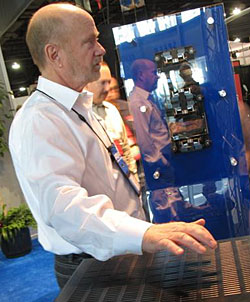| Columns Retired Columns & Blogs |
One interesting excerpt from Cary Christie's comments was his observation that, "I think that some of the best pure-audio experiences I've had have been with a good stereo system in the front, and left-minus-right ambience recovery for the rear channels—just enough so that it's barely there. It becomes a more involving experience."
 Christie: I have a philosophy that says that accurate sound reproduction should be [just that], irrespective of the types of software that are used to generate the sound—whether you have a cannon that's going off, and whether that cannon happens to be in a movie or whether it happens to be [in] the 1812 Overture, whether it's Also Sprach Zarathustra or 2001. These things all require accurate sound-reproduction capability. The dynamics of loud music place the same requirements on the system that a movie does. I believe that, ultimately, what we're going to have is multichannel sound.
Christie: I have a philosophy that says that accurate sound reproduction should be [just that], irrespective of the types of software that are used to generate the sound—whether you have a cannon that's going off, and whether that cannon happens to be in a movie or whether it happens to be [in] the 1812 Overture, whether it's Also Sprach Zarathustra or 2001. These things all require accurate sound-reproduction capability. The dynamics of loud music place the same requirements on the system that a movie does. I believe that, ultimately, what we're going to have is multichannel sound.





































